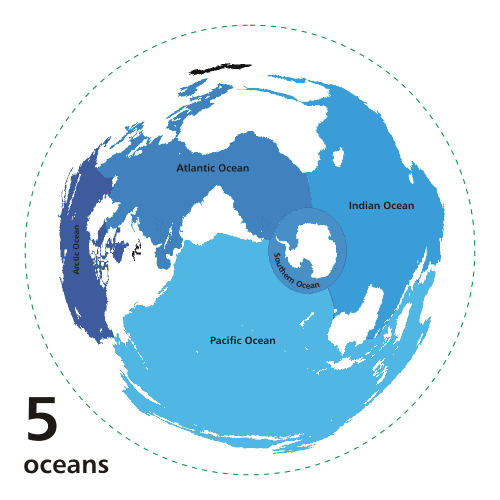
About 72% of our planet’s surface is covered by one huge global ocean that serves as the world’s largest habitat and helps regulate the global climate. But although Earth’s continents are surrounded by one single continuous body of water, this global ocean is formally divided into five ocean basins.
These oceans are classed as distinct because they encompass a distinct ecological region defined by ocean currents and temperatures, are almost enclosed by continents, or simply because of cultural or political considerations.
The world’s five oceans are the Pacific, Atlantic, Arctic, Indian, and Southern Oceans. Collectively, they stretch over 361,000,000 square kilometers (139,000,000 sq miles) and harbor over 230,000 known species of marine life. But since much of the ocean depths are unexplored, there could be up to two million species.
Although scientists have been referring to the icy waters around Antarctica as the Southern Ocean for many years, cartographers officially recognized it as unique only very recently, on June 8, 2021 (World Ocean Day). But the International Hydrographic Organization (IHO) had tried to settle the debate much earlier, through a 2000 publication that declared, named, and demarcated the Southern Ocean, also known as the Antarctic Ocean.
There are 68 member countries of the IHO, and twenty-eight countries responded to the IHO’s request for recommendations on what to do about the Southern Ocean. Eighteen of the 28 responding countries voted in favor of calling the ocean the Southern Ocean over the alternative name Antarctic Ocean.
The Pacific Ocean
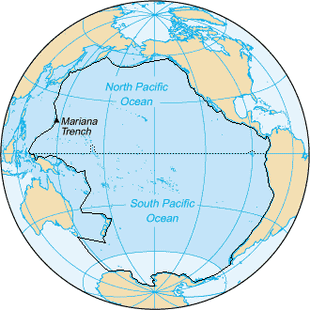
- Size: 165.25 million square kilometers (100.8M sq mi.)
- Average depth: 4,280 meters (≈14,000 ft.)
- Deepest Point: Mariana Trench, 10,911 meters (≈35,800 ft.)
The Pacific Ocean is, by far, the largest, deepest, and also the most biodiverse ocean out of the five. It spans over 165 million square kilometers from California to China, more than all of Earth’s landmasses put together.
The Pacific Ocean was named by explorer Ferdinand Magellan in 1520, who originally called it Mare Pacificum, Latin for “peaceful sea”, as he sailed through its calm waters. But Magellan obviously only saw the gentle side of this giant ocean.
In fact, the Pacific Ocean stirs up some of the strongest storms ever, including hurricanes, typhoons, and cyclones, thanks to the high energy of its warmer water.
Hurricanes, cyclones, and typhoons are actually all the same weather phenomena, namely storms with wind speeds over 120 kilometers per hour (75 miles per hour). Hurricanes occur in the eastern Pacific, typhoons in the northwestern part of the ocean, and cyclones form in the southwestern Pacific.
Stretching across half the world, the Pacific’s water temperatures vary greatly from freezing in the poles to about 25-30°C (77-84°F) near the equator. Generally, the Pacific is significantly warmer than the Atlantic.
Salinity also varies with the latitude, with water near the equator being less salty than those at the mid-latitudes.
The surface circulation of waters in the Pacific is clockwise in the Northern Hemisphere, a movement called the North Pacific Gyre, and counter-clockwise in the Southern Hemisphere.
The Pacific is home to over 25,000 islands, including New Guinea, the second-largest island in the world. This large number of islands is owed to the basin’s rich volcanic activity around its edges, known as the “Ring of Fire”.
Volcanoes form a 25,000-mile-long chain at the boundary where the Pacific tectonic plate slides against other neighboring plates. The same process also forms deepwater trenches, including the world’s deepest point, the Mariana Trench located east of the Philippines.
But the Pacific harbors all manners of records and superlatives, including the Great Pacific Garbage Patch, a testament to marine pollution on a grand scale. Sitting between Hawaii and California, the Great Pacific Garbage Patch stretches over an area larger than the state of Texas.
The plastic pollution includes everything from discarded bottles to abandoned industrial fishing gear, but over 95% of the plastics from the patch are actually microplastics, tiny polymer bits smaller than a grain of sand that circulated through the waters and eventually make their way into the marine food web.
The Atlantic Ocean
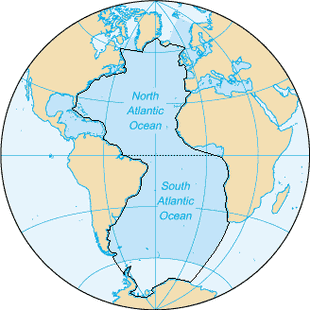
- Size: 82.36 million square kilometers (5.1M sq mi.)
- Average depth: 3,339 metres ≈10,950 ft.)
- Deepest Point: Puerto Rico Trench, 8,605 meters ( ≈28,200 ft.)
The Atlantic is one of the youngest oceans, having formed long after the Pacific, Indian, and Arctic Oceans during the Triassic Period. Its name is derived from Greek mythology, the word Atlantikos meaning the Sea of Atlas, where Atlas was a titan responsible for standing on the edge of the world and holding up the heavens on his shoulders.
The ocean forms an elongated, S-shaped basin divided into the North Atlantic and South Atlantic by Equatorial Counter-Currents. The North and South Atlantic’s distinct ocean currents shape weather patterns around the world.
The distinctive shape of the Atlantic has a story behind it. If you ever wondered why the Atlantic coastlines of South America and Africa look like they fit together, it’s because they actually used to fit together on a giant geological jigsaw puzzle, a supercontinent called Gondwana that began to break up about 180 million years ago.
Covering close to 20% of the planet’s surface, the Atlantic is eclipsed in size only by the Pacific. You could fit the continental United States six and a half times inside this ocean. Its ocean floor is composed of the mid-Atlantic Ridge, a submerged mountain range extending all the way from Iceland to 58 degrees South in latitude, making it the longest mountain range in the world.
Its deepest point is found in the Milwaukee Deep in the Puerto Rico Trench, nearly eight kilometers (five miles) below the water’s surface, near the island of Puerto Rico.
The Arctic Ocean
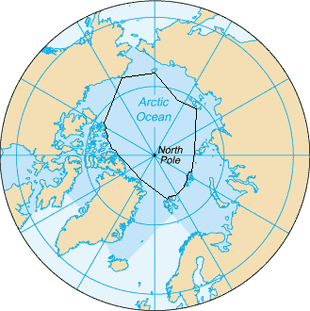
- Size: 14.05 million square kilometers (8.73M sq mi.)
- Average depth: 1,050 meters ( ≈3445 ft.)
- Deepest Point: Litke Deep in the Eurasian Basin, 5,450 meters 17,880 ft.)
The Arctic ocean is the smallest and northernmost ocean, embracing the Arctic Circle at the North Pole. Its most remarkable feature is its perennial (all-year) sea ice, which used to cover over half of the ocean, but this is changing at a frightening rate. The Arctic region is warming twice as fast as anywhere else on Earth due to man-made climate change, with important consequences for local wildlife.
Compared to the 1980s, the surface area of Arctic sea ice is down by 40%. By the late 2030s, the Arctic Ocean could become largely free of sea ice during the summers. This means that a once impenetrable natural barrier could soon become open to large-scale commercial shipping and fossil fuel exploration — something that we’re already seeing now. Even tourists are now flocking to this otherworldly landscape, a trip that used to be usually reserved for daring explorers, researchers, and fishermen.
Under its frigid water, the Arctic is teeming with life, from tiny plankton to large bowhead whales. On the sea ice itself, polar bears and walruses can be seen roaming. But warming waters are likely to hurt the entire food chain. For instance, warm waters impact the zooplankton life cycles, and by extension the myriad of animals that prey on them, while terrestrial animals like polar bears will find it difficult to find food as they rely on sea ice to traverse the landscape.
The greatest inflow of water comes from the Atlantic by way of the Norwegian Current, which then flows along the Eurasian coast. Water also enters from the Pacific via the Bering Strait. Further modified by river inputs and the freezing and melting of sea ice, the Arctic Ocean exports modified waters back into the North Atlantic, thus impacting the global thermohaline circulation.
The Indian Ocean
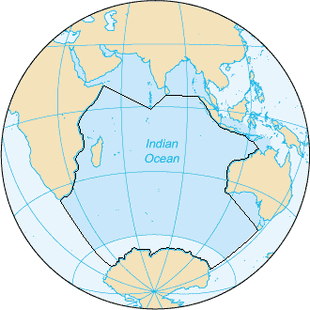
- Size: 73.56 million square kilometers (45.7M sq mi.)
- Average depth: 3,960 meters ( ≈13,000 ft.)
- Deepest Point: Sunda Deep, 7,450 meters ( ≈24,440 ft.)
The Indian Ocean covers approximately one-fifth of the world’s total ocean cover. It’s the smallest and youngest ocean of the world’s three major oceans (the others being the Pacific and Atlantic), but don’t let its junior status fool you — the Indian Ocean is perhaps more physically complex than the Pacific and Atlantic.
Like the Atlantic, the Indian Ocean formed around 180 million years ago as a consequence of the breakup of the southern tip of the supercontinent Gondwana. By 36 million years ago, the Indian Ocean attained its present configuration, bounded by the Indian subcontinent towards the north, Africa towards the west, The Sunda Islands and Australian lands towards the east, and Antarctica towards the south.
Climate-wise, the Indian Ocean can be subdivided into four general latitudinal climatic zones based on atmospheric circulation: monsoon, trade winds, subtropical and temperate. It also has subantarctic and Antarctic areas. Although it borders Antarctica to the south, the Indian Ocean is the warmest ocean in the world.
As a consequence of the high water temperature, not much marine life can be found as the conditions aren’t optimal for the growth of plankton, the bottom of the food web, which all other marine life depends on. The challenge for life is compounded by the fact that the Indian Ocean has the lowest oxygen content in the world due to the higher evaporation rate.
The Southern Ocean

- Size: 20.3 million square kilometers (12.6M sq mi.)
- Average depth: 4,496 meters ( ≈14,750 ft.)
- Deepest Point: South Sandwich Trench, 7,235 meters (≈23,700 ft.)
Also known as the Antarctic Ocean, the Southern Ocean is the most southerly of the world’s five great oceans.
For decades, geographers have been debating whether the waters that surround Antarctica had enough unique characteristics to deserve a designation of their own as a full-fledged oceanic basin. Some claim this body of water is simply a colder, southern extension of the Pacific, Atlantic, and Indian Oceans. But in 2021, the National Geographic Society made a cartographic update, siding with scholars who viewed the Antarctic waters as a distinct ocean.
Most other oceans are defined by the continents that border them. For instance, the Atlantic is bound by the Americas to the west and by Europe and Africa to the east. But the Southern Ocean is primarily defined by its currents, such as the Antarctic Circumpolar Current, which flows from west to east around the icy continent. Inside this current, the waters are much colder and slightly less salty than the oceans further to the north.
The Antarctic Circumpolar Current has a profound impact on Earth’s climate and weather system. It pulls waters from the warm Atlantic, Pacific, and Indian Oceans, thereby transporting heat around the planet through a global circulation system that scientists commonly refer to as “the conveyor belt”.
Although it’s not warming as fast as the Arctic, the Southern Ocean is one of the most rapidly warming areas of the world. The higher temperatures and lower oxygen availability may severely impact Antarctic fish by affecting the life cycles of krill — the major food source for many Antarctic fish species — leading them to migrate to cooler, more oxygenated water.
Understanding the present state of Antarctic waters is essential to forecasting the changes that will occur in the near future and predicting the impacts on Antarctic food webs and biogeochemical cycles.
Do the oceans have real boundaries?

In the same way that all of Earth’s present-day continents were once part of a single, massive continent called Pangaea, so do all the oceans belong to a single world ocean — which, during the age of Pangaea, was called Panthalassa.
In fact, the same can be said about the rest of the smaller seas, such as the Mediterranean or the Black Sea, which are connected through straits or simply by open currents with the rest of the oceanic basins. The fact that the world’s oceanic waters constitute one global, interconnected body of salt water is of fundamental importance to oceanography.
Much like we classified the continents, oceans are designated based on geographical and physical criteria, but also on political and cultural considerations. As such, the boundaries that separate these bodies of water are arbitrary, largely defined by the continents that frame them.
Water properties, ocean currents, and biological populations are not necessarily constrained by these boundaries, although they may be distinct to one or more regions of the World Ocean. But, for now, until the continents finish their next big move or until ocean scientists discover something world-changing, we recognize 5 oceans.


